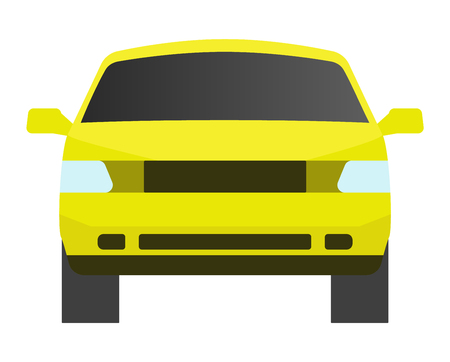Introduction: Navigating Indian Road Realities
When it comes to driving in India, road conditions present a unique set of challenges that demand thoughtful consideration before choosing a vehicle. From bustling city streets riddled with potholes and unexpected speed breakers to rural stretches with uneven surfaces and waterlogged patches during the monsoon, Indian roads truly test the endurance of both driver and car. In such an environment, selecting the right type of vehicle becomes crucial for comfort, safety, and durability. This brings us to a common debate among Indian car buyers: is an SUV or a Sedan better suited for handling the rough and unpredictable nature of Indian roads? To answer this question, it is essential to first understand the specific demands posed by these conditions, and how different vehicle types are engineered to meet them. This article sets the stage for a detailed comparison between SUVs and Sedans, focusing on their performance, practicality, and suitability for the diverse and often challenging terrain found across India.
2. Ground Clearance: A Key Indian Perspective
When it comes to tackling bad Indian roads, ground clearance is one of the most critical factors to consider. The diverse terrain in India — from the chaotic city streets riddled with potholes and speed breakers to the unpredictable rural pathways — demands vehicles that can glide over obstacles without underbody damage. In Indian driving conditions, a higher ground clearance not only improves the ease of navigation but also ensures longevity for the vehicle’s suspension and chassis.
Understanding Ground Clearance
Ground clearance refers to the distance between the lowest point of a vehicle’s undercarriage and the road surface. A greater ground clearance is particularly beneficial in India where road quality can change drastically within a few kilometres, especially during monsoon seasons when water-logged streets and hidden potholes are common.
Comparison: SUV vs Sedan Ground Clearance
| Vehicle Type | Average Ground Clearance (mm) | Suitability for Bad Roads |
|---|---|---|
| SUV | 180-220 | Excellent – Easily clears potholes, bumps, and rough terrain |
| Sedan | 150-170 | Moderate – Prone to scraping on large speed breakers or deep potholes |
The Indian Scenario
For Indian cities like Mumbai, Bengaluru, or Delhi, notorious for erratic road surfaces and sudden speed breakers, SUVs offer a significant advantage due to their elevated stance. In rural areas, where roads may be unpaved or filled with stones and debris, the robust ground clearance of an SUV becomes almost essential. On the other hand, sedans with lower clearance might frequently encounter underbody hits, leading to higher maintenance costs over time.

3. Ride Comfort and Suspension: SUV vs Sedan
When considering Indian road conditions, which often include broken tarmac, potholes, and uneven surfaces, the suspension setup and ride comfort of a vehicle play a crucial role. SUVs typically come equipped with high ground clearance and robust suspension systems designed to absorb shocks from rough terrain. Most SUVs use independent or multi-link suspension at the rear, paired with McPherson struts in front, providing better damping on bumpy roads. This setup allows SUVs to glide over speed breakers, gravel stretches, and patched-up city roads with minimal discomfort to passengers.
Sedans, on the other hand, are generally built for smoother highways and urban roads. Their suspension is usually tuned for stability and handling rather than absorbing large bumps. Most sedans feature lower ground clearance and a stiffer suspension setup, which can transmit more vibrations and jolts into the cabin when driving over typical Indian road imperfections. While this makes sedans feel more planted at higher speeds on good roads, it can compromise ride quality on rural or poorly maintained stretches.
In summary, if your daily commute involves negotiating potholed city lanes or rural bylanes common in India, an SUV offers superior ride comfort thanks to its advanced suspension and higher ground clearance. Sedans may provide a plusher experience on expressways but can struggle to isolate passengers from harsh impacts on bad roads.
4. Maintenance and Running Costs in Indian Context
When it comes to evaluating which vehicle is better suited for bad Indian roads, it is crucial to consider the maintenance and running costs associated with SUVs and sedans. In India, ownership experience extends far beyond the initial purchase price; long-term reliability, repair expenses, and fuel efficiency are major factors influencing a buyers decision.
Average Ownership and Repair Costs
SUVs generally have higher upfront costs compared to sedans due to their larger size, complex suspension systems, and heavier build. This translates into costlier spare parts and service charges. On the other hand, sedans are relatively affordable to maintain because of simpler construction and widespread availability of parts.
| Cost Parameter | SUV (Approximate) | Sedan (Approximate) |
|---|---|---|
| Annual Maintenance | ₹12,000 – ₹25,000 | ₹8,000 – ₹15,000 |
| Typical Repair Cost (per incident) | ₹5,000 – ₹15,000 | ₹3,000 – ₹8,000 |
| Spare Parts Availability | Moderate to Low (Varies by Brand) | High (Most Brands) |
Fuel Efficiency and Daily Running Costs
Indian road conditions often lead to lower fuel efficiency than manufacturer claims. SUVs typically deliver 8-14 km/litre in city conditions due to their higher weight and engine capacity, while sedans average between 12-18 km/litre. Given the ever-fluctuating petrol and diesel prices in India, this makes sedans more economical for daily use.
| Vehicle Type | Average City Mileage (km/litre) | Monthly Fuel Cost (1,200 km/month at ₹100/litre) |
|---|---|---|
| SUV | 10–12 | ₹10,000 – ₹12,000 |
| Sedan | 14–16 | ₹7,500 – ₹8,600 |
Real-World Reliability Concerns for Indian Users
The ruggedness of an SUV may seem attractive for poor road conditions; however, frequent exposure to potholes and rough terrain increases wear-and-tear on suspension components, tyres, and underbody protection. While SUVs can withstand more abuse than sedans in the short term, their cost of upkeep rises accordingly. Conversely, sedans might suffer damage more quickly on bad roads but tend to be easier and cheaper to repair.
Affordability Verdict: Balancing Needs with Budget
If your primary concern is minimising running costs without sacrificing too much comfort or reliability on challenging Indian roads, a sedan remains the wallet-friendly choice for most urban users. For those frequently travelling through rural or poorly maintained areas where durability trumps fuel economy, the extra investment in an SUV may be justified despite higher maintenance expenses.
5. Practicality and Family Needs: Indian Family Priorities
When evaluating which vehicle suits bad Indian roads better—SUV or Sedan—it is crucial to factor in the unique priorities of Indian families. Most Indian households, especially in metro cities and tier-2 towns, tend to prioritise space and versatility. In many cases, joint families are still prevalent, where weekend outings or family functions involve multiple members travelling together. This makes cabin space a significant consideration. SUVs generally offer higher seating capacity, with many models featuring flexible seat arrangements that can accommodate up to seven passengers comfortably. This is particularly advantageous for larger families or for those who regularly host relatives.
Boot space is another important aspect for Indian buyers. Whether it’s about carrying luggage for a family wedding outstation, transporting sports equipment for children, or simply packing supplies for a road trip to hill stations like Manali or Ooty, practicality matters. SUVs usually provide superior boot capacity compared to sedans, allowing families to carry more without compromising on passenger comfort.
Versatility also plays an essential role in the decision-making process. Indian road conditions are unpredictable—ranging from well-paved highways to potholed city streets and muddy rural lanes. SUVs not only handle these diverse terrains with ease but also offer higher ground clearance, reducing the risk of underbody damage during monsoon season or while navigating speed breakers common in Indian cities.
While sedans do provide a comfortable ride and adequate boot space for nuclear families or everyday city commuting, they may fall short when it comes to handling larger groups or heavy luggage under challenging road conditions. Therefore, considering the cultural preference for joint activities and multi-generational travel, SUVs emerge as the practical choice for Indian families seeking reliability and convenience on bad roads.
6. Cultural Preferences and Status Symbol in India
When considering whether an SUV or sedan is better for bad Indian roads, cultural preferences and social aspirations play a significant role in shaping consumer choices. In India, vehicles are more than just a mode of transportation; they often serve as a status symbol reflecting the owner’s success and lifestyle. The SUV, with its imposing presence, higher seating position, and rugged image, has increasingly become associated with prosperity and modernity, particularly among urban families and young professionals. This cultural association is amplified by Bollywood movies and celebrity endorsements, further elevating the desirability of SUVs.
On the other hand, sedans have traditionally been regarded as sophisticated and classy, favored by business professionals and those who value comfort and elegance. However, in recent years, the perception that sedans struggle on poor road conditions has slightly diminished their appeal outside metro cities.
The urban versus rural divide also plays a crucial role in vehicle preference. In urban centers like Mumbai, Delhi, and Bangalore, compact SUVs are popular due to frequent potholes and water-logged streets, making ground clearance a practical necessity. Meanwhile, in semi-urban and rural areas where roads can be unpredictable and maintenance is sporadic, larger SUVs are even more coveted for their durability and ability to handle tough terrains.
Furthermore, owning an SUV is often seen as a symbol of upward mobility within joint families or extended communities. It signifies not only financial capability but also readiness to embrace change and adventure. Conversely, sedans continue to attract those with traditional tastes or specific professional requirements.
Ultimately, while technical factors like ground clearance and suspension matter greatly for bad roads, the decision between an SUV and sedan in India is deeply intertwined with cultural context, social standing aspirations, and regional lifestyle differences.
7. Verdict: Which Suits Indian Roads Better?
When weighing the pros and cons of SUVs versus sedans for Indian roads, it is crucial to consider real-life driving environments, local road conditions, and daily commuting needs. SUVs offer high ground clearance, robust suspension setups, and stronger build quality, making them more capable of handling potholes, uneven patches, speed breakers, and waterlogged streets that are common in many Indian cities and rural areas. Their commanding driving position also improves visibility in dense traffic situations and during long highway drives.
On the other hand, sedans excel in comfort, fuel efficiency, and overall ride quality on well-maintained roads. They usually offer better boot space arrangements for luggage and are easier to manoeuvre in tight city spaces due to their lower centre of gravity. However, sedans often struggle with underbody scraping and suspension wear when regularly exposed to rough or broken roads.
Given the current state of infrastructure across much of India—where even urban roads can be unpredictable—a practical recommendation would be to opt for an SUV if your daily routes include poorly maintained stretches or you frequently travel outside metros. For those whose commutes are limited to well-developed city areas with decent road conditions, a sedan remains a sensible choice for its comfort and efficiency.
In summary, while both vehicle types have their merits, SUVs generally offer a safer and more versatile solution for challenging Indian road conditions. Always assess your personal needs and typical routes before making a final decision.


